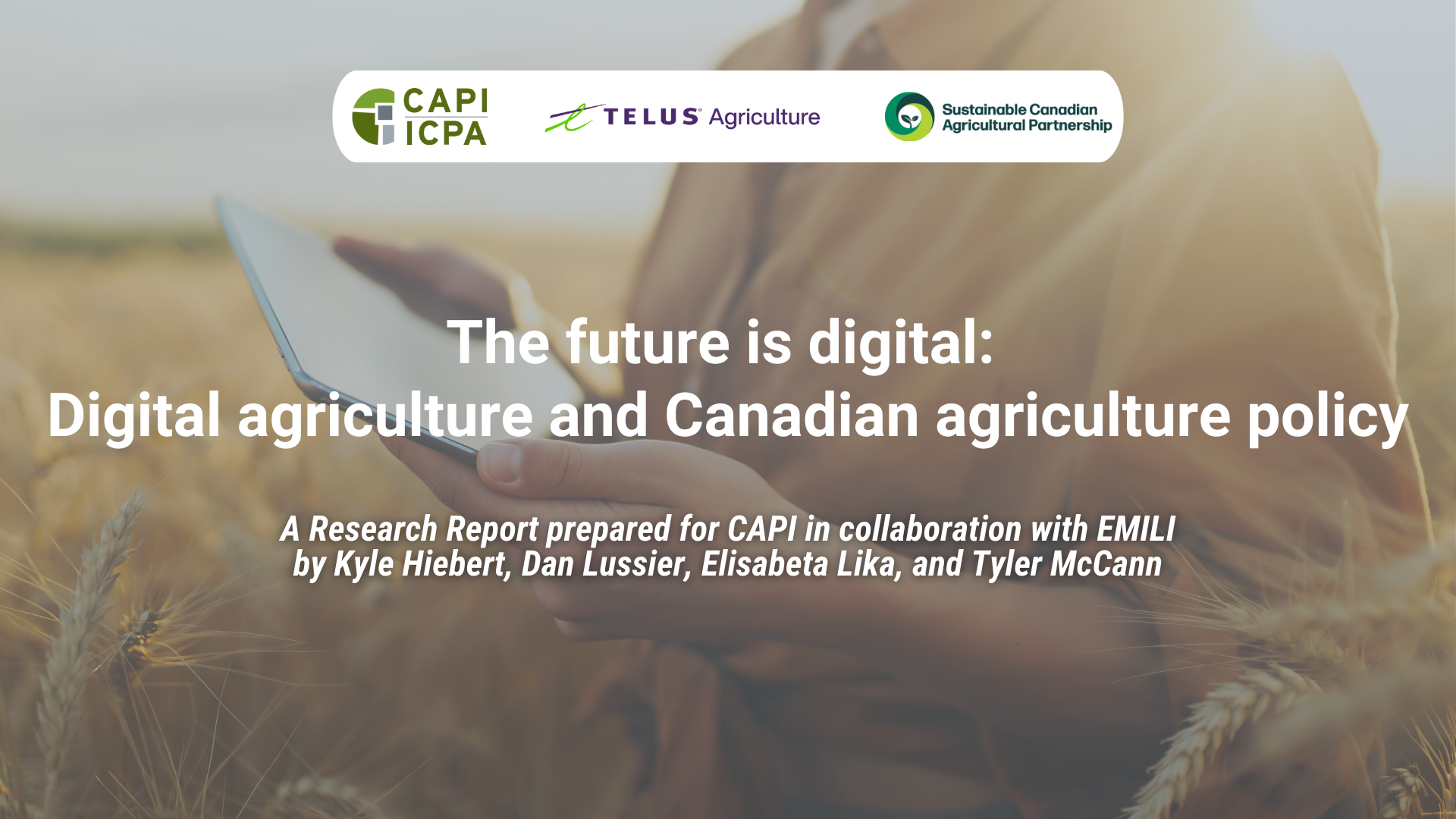The future is digital: Digital agriculture and Canadian agriculture policy

Note from CAPI
This report examines digital agriculture’s role in strengthening Canadian farming amid rising costs, trade pressures, and climate challenges. The research stems from a need to understand why adoption lags despite the clear potential for gains in productivity, competitiveness, and sustainability. It matters now because Canada’s agricultural policy, including the 2023-2028 Sustainable Canadian Agricultural Partnership, overlooked digital agriculture as a priority, leaving farmers exposed as global competitors leap ahead. With the next Federal-Provincial-Territorial agreement approaching, this gap demands attention.
Farmers face a critical decade. Many are aging out, consolidating, and passing the reins to a tech-ready generation. Others are keen to embrace new, readily available technologies that can enable better business practices, but they require more support from policymakers. Together, these two dynamics have created a perfect window of opportunity to act. Indeed, it may even represent a generational now-or-never moment to usher in a digital revolution within Canada’s agriculture sector.
The report reveals a fragmented ecosystem where large operations thrive by adopting new tools and technologies, but smaller farms struggle, missing out on profitability and sustainability gains. Insights and recommendations from this report aim to elevate digital agriculture as a national priority. Five actionable steps should bridge adoption divides, equipping farmers for the future. The stakes are high, and the time to move is today.
Key Takeaways
- Current conversations about digital agriculture focus too much on the potential benefits of technology, not enough on farm-level realities. Shifting to practical challenges and payoffs can drive meaningful change.
- Digital agriculture tools available to producers today have been proven to boost productivity and competitiveness and reduce environmental impacts with the potential to unlock a further $750 million to $1.5 billion in annual net revenue over the next decade.
- Adoption rates in Canada remain relatively low, leaving farmers behind global peers. Poor rural connectivity, unclear rates of return on investment, and distrust of the data stewardship policies are a few of the barriers that stall adoption.
- The Sustainable Canadian Agricultural Partnership ignored digital agriculture as an area of focus. The next FPT agriculture policy framework agreement should attach strategic importance to strengthening the adoption and effective use of digital technologies, especially given the rapid digitalization of the broader Canadian and global economies.
- Aging farmers, succession gaps, market pressures, and global trade uncertainty make this a now-or-never moment. The digital transformation of Canadian agriculture cannot wait forever.
